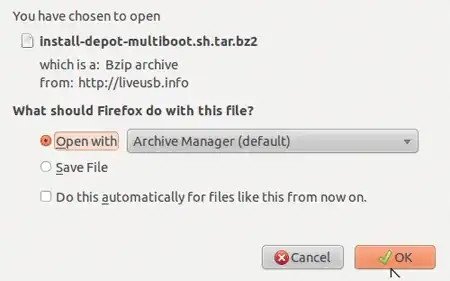Is it possible to create a Ubuntu Live USB installer using Ubuntu, GParted & HBCD?
If yes could anyone brief the procedure in details please?
Is it possible to create a Ubuntu Live USB installer using Ubuntu, GParted & HBCD?
If yes could anyone brief the procedure in details please?
Here I got something, taken from pendrivelinux.com
Ubuntu's Archive Manager
install-depot-multiboot.sh Script to your Desktop

install-depot-multiboot.sh from your desktop and select the option to Run in Terminal
Applications > Accessories > MultiBootUSB Device from the list and click Validate

https://help.ubuntu.com/community/InstallAndBootMultipleLinuxFromPendriveFlashDriveUSBDisk
Should allow you to do that.
You can use the Ubuntu program Startup Disk Creator to put Ubuntu on a stick. You will have to specify the .iso file to use and carefully provide it with the device you want to install to. Before you proceed with installing you can tell the Disk Creator that you want persistent memory and specify how much (with a maximum of 4GB for a big stick).
The installed system will have the Ubuntu version you selected, and will have gparted.
You can then boot the USB stick and partition disks or install Ubuntu from it, etc. You can also install additional packages on it (I wouldn't update linux, however) and make other changes. Due to the persistence setting these will be saved to the USB stick from boot-to-boot.
In his comment I believe @Lord of Time was referring to the fact that flash memory has a somewhat limited lifetime, limited in the number of writes to its sectors before those particular sectors are marked lost and the flash memory loses capacity. The controller on the flash memory stick tries to spread the wear around the stick. If I understand his comment, that's the reason for using a couple of sticks and using only part of each, rather than combining them--it should allow them to last longer.
It should also be simpler, and therefore less troublesome, but a little more expensive.